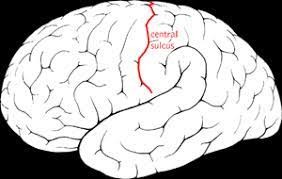Benign Rolandic Epilepsy - Symptoms, Causes and Treatments

What Is Benign Rolandic Epilepsy?
Benign Rolandic Epilepsy is a rare form of epilepsy
that occurs mainly in children. It usually presents with recurrent seizures,
but the seizures are not accompanied by any abnormal mental status or motor
impairment.
With the study of the disorder, it is believed that
this condition begins to occur due to anatomical changes in the developing
brain, which change how it communicates with itself and its neighbors.
The presentation is most often classified into three
separate types: infantile spasms, myoclonic-atonic seizures, and neonatal
seizures which are typically observed during infancy. All types of Rolandic
Epilepsy are characterized by a benign course with minimal morbidity and can be
managed with anticonvulsant therapy.
Invasive procedures such as surgery involve the use of
a craniotomy to remove the epileptic focus, via an incision in the skull, as
well as an open suction drain.
Abscesses can form or there can be multiple abscesses,
but this typically goes away shortly after the surgery is complete. Especially
heavy bleeding is not uncommon and can cause a hematoma.
Benign Rolandic Epilepsy is a rare form of epilepsy
that occurs mainly in children. It usually presents with recurrent seizures,
but the seizures are not accompanied by any abnormal mental status or motor
impairment.
Frequently Asked Questions On Benign Rolandic Epilepsy
What Is The Only Cure For Benign Rolandic Epilepsy?
The treatment of benign rolandic epilepsy is with
anticonvulsants and general therapy. When appropriate, patients should be
started on therapy with a single drug. If seizures continue despite treatment
and if there are no adverse effects from the drugs, then another drug can be
added to the regimen.
This may happen quickly—within a month. It is important
to remember that simply having seizures does not mean that they are severe or
abnormal.
The seizure types in benign rolandic epilepsy are
well-described and standard EEG findings can help guide therapy in these
patients. Therefore, a seizure that does not begin or end with a clinically significant
event is not a reason to increase the dose of the medications.
What Are The Causes Of Benign Rolandic Epilepsy?
The exact cause of benign rolandic epilepsy has not yet
been determined. However, there are strongly suspected causes for this condition.
There are three theories regarding the cause of benign
rolandic epilepsy: structural, functional, and developmental. The theory that
has most recently gained attention is developmental with alteration in brain
networks involved in certain types of seizures. Some studies suggest that this
happens due to an excess number of excitatory neurons which leads to
hyperexcitable conditions in some individuals.
How Is Benign Rolandic Epilepsy Diagnosed?
It can be difficult to accurately diagnose benign
rolandic epilepsy because it is a rare disorder and the characteristic EEG
patterns may not be present in all patients when they are seizure-free.
However, in some patients, this condition appears to be
accompanied by other findings such as abnormal brain scans, hydrocephalus
(water on the brain), and mental retardation.
Therefore, in most cases, there is a definitive
diagnosis of benign rolandic epilepsy using electroencephalography (EEG) and
other laboratory markers.
What Does Benign Rolandic Epilepsy Consist Of?
Benign rolandic epilepsy is a rare and poorly
understood form of epilepsy that mainly affects children.
How Is Benign Rolandic Epilepsy Treated?
The treatment of benign rolandic epilepsy involves the
use of several types of medications. The drugs are used to help manage the
seizures, although other factors should be taken into consideration including
factors such as other illnesses that should be treated, history of adverse
effects from other medications, and other pre-existing conditions that will need
to be addressed at the same time.
Some patients may experience an increase in their
seizure rate while taking anticonvulsants. However, researchers have found that
after four to six months of additional drug therapy, the seizure rate usually
decreases again.
